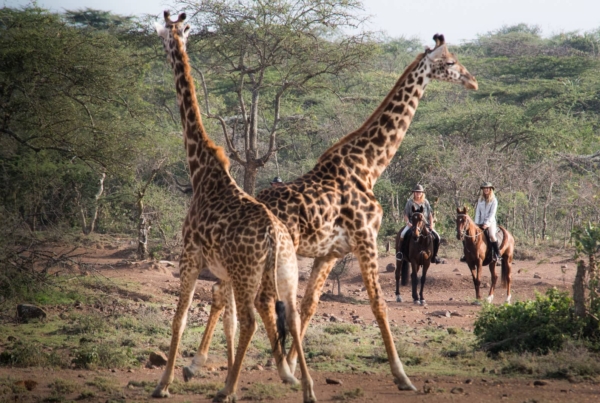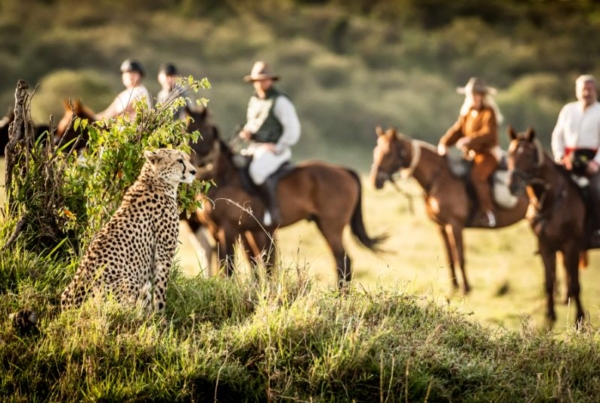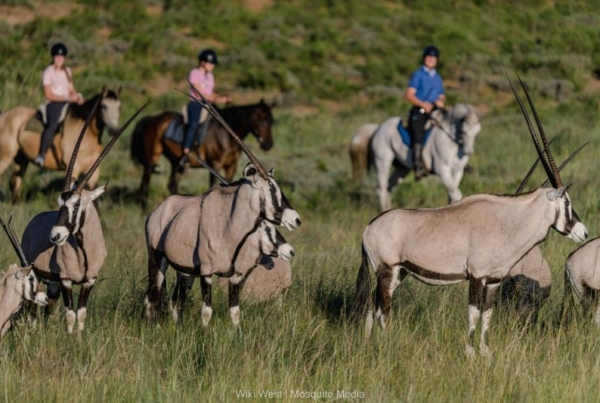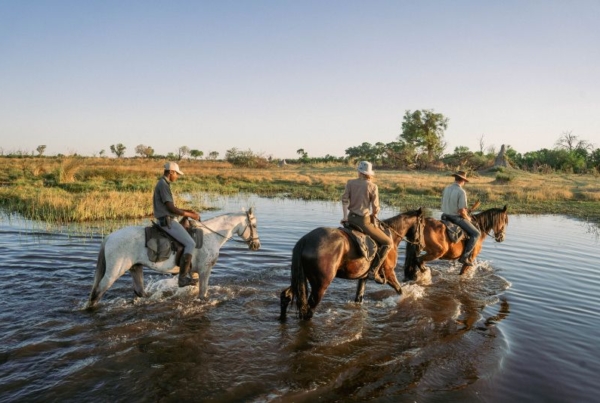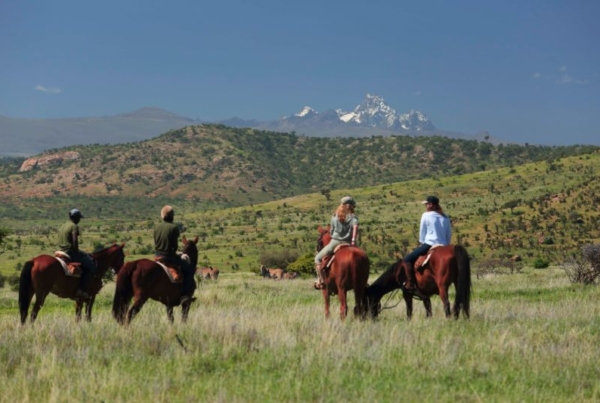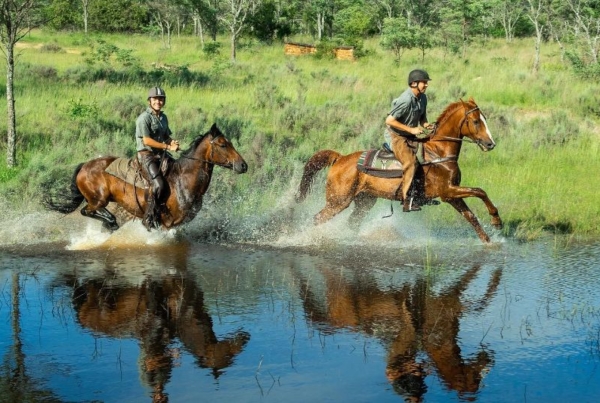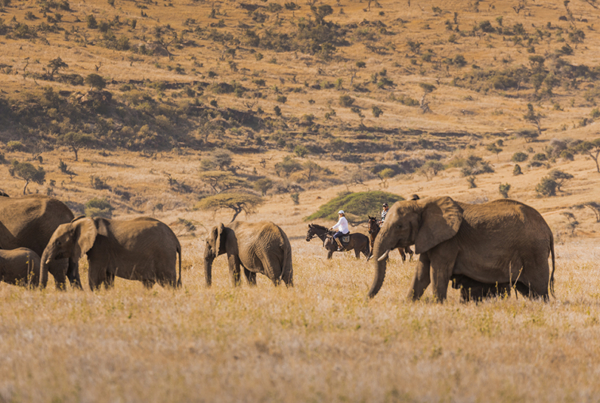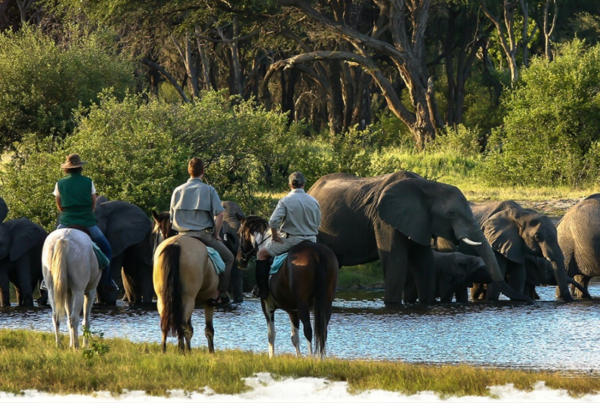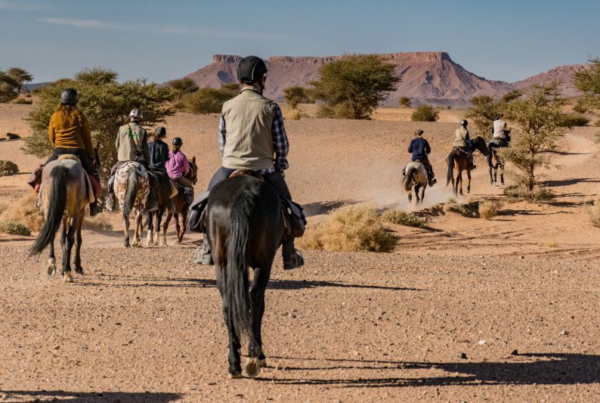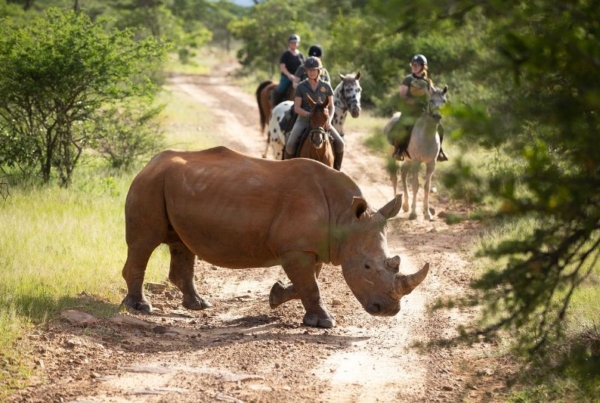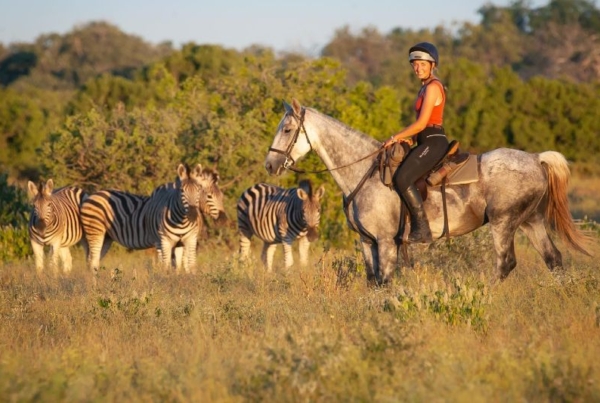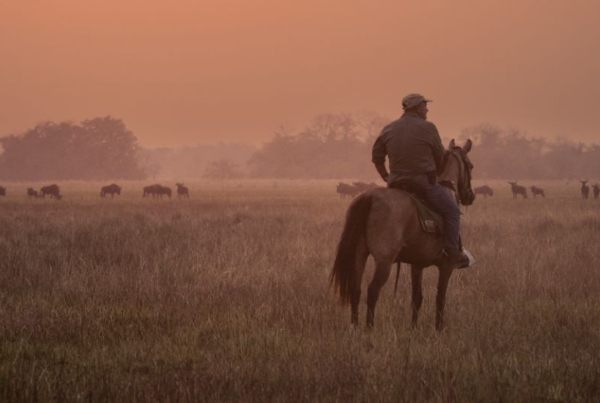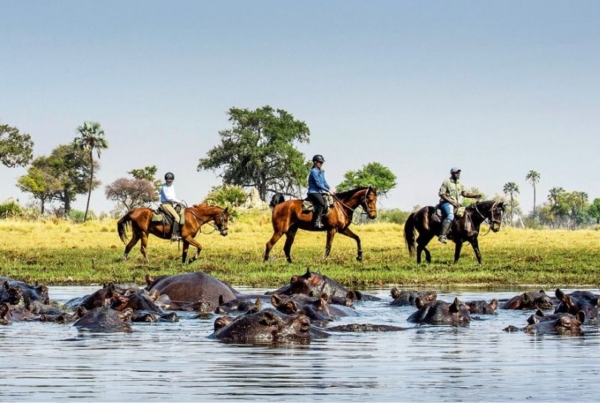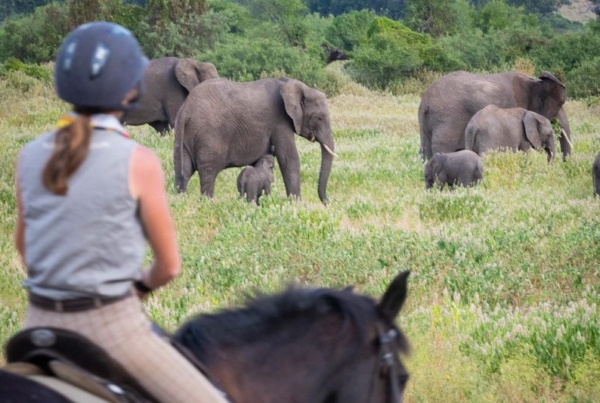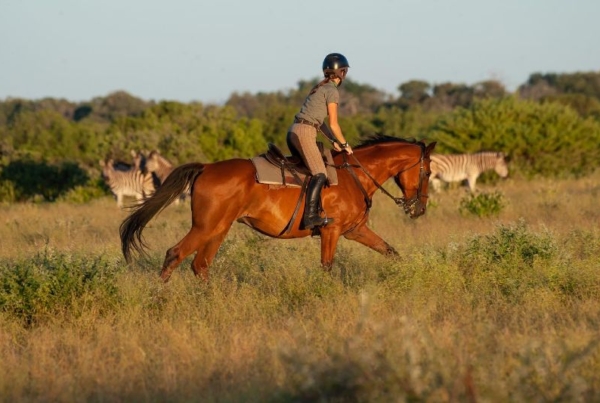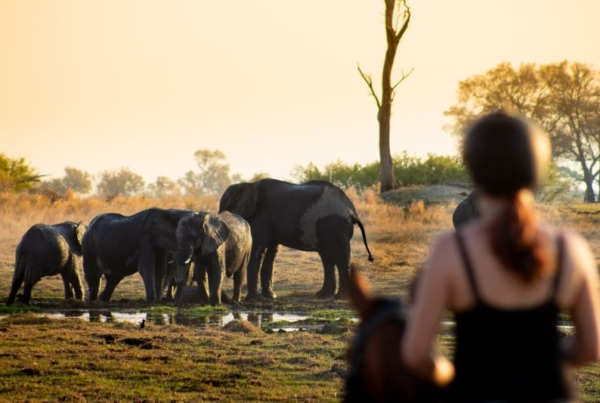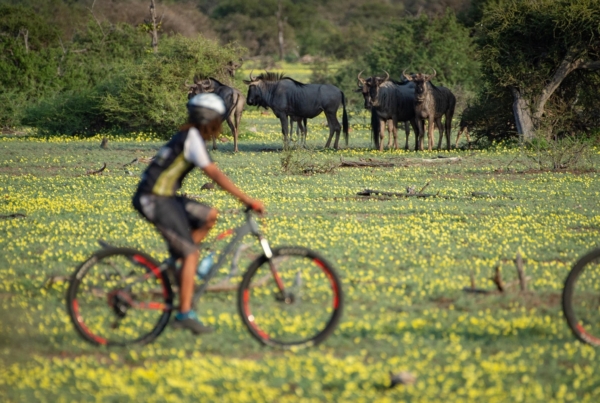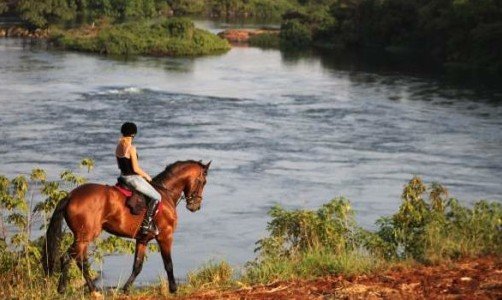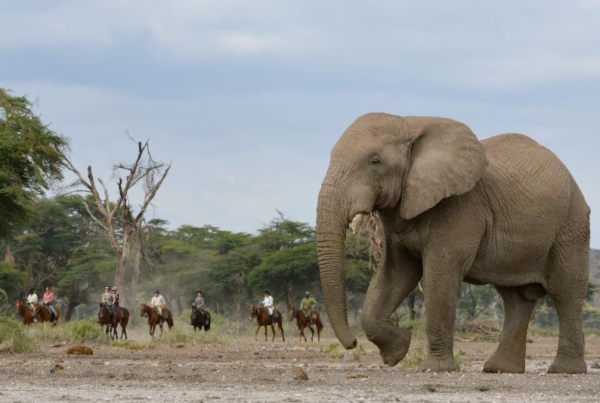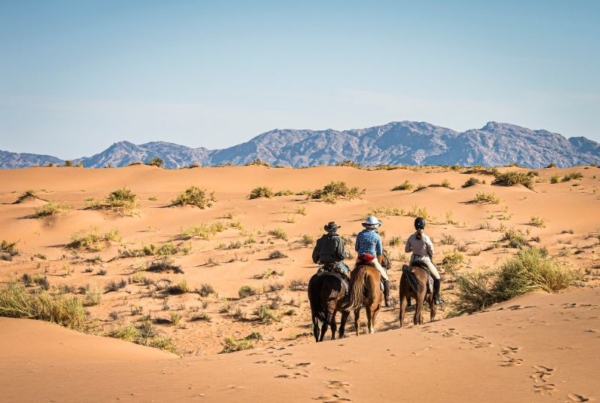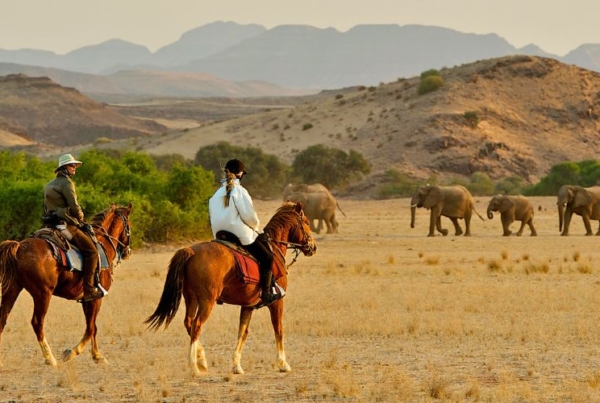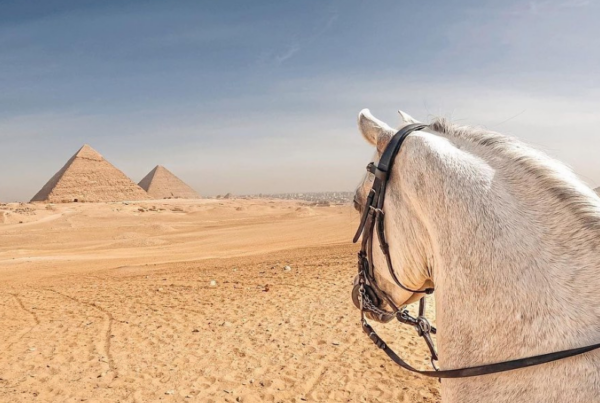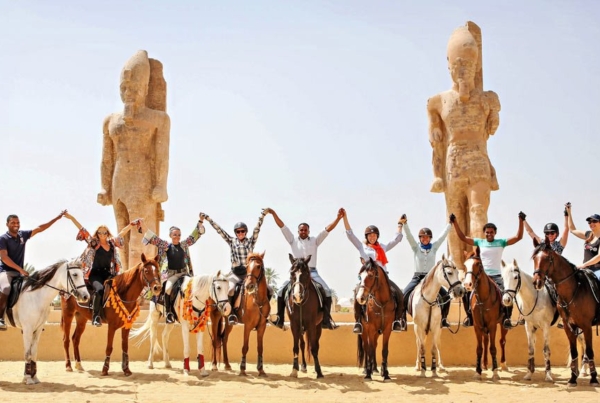We consider riders to be advanced if you have owned your own horse, competed or hunted seriously and been riding regularly for many years. You must also be riding fit, very well balanced in the saddle and confident outdoors at all paces and on a variety of horses.
Advanced horse riders can head out on all of our horse safaris, including our lodge-based and trail based riding holidays. If you want to go on horse safari where there is big game such as lion, elephant and leopard present, then you will need an advanced or intermediate plus level of riding. You will need to be well balanced in the saddle, ride with contact and able to react to all eventualities. You will need to be able to post in the trot for at least 10 minutes at a time, and canter in a two-point position for at least 5 minutes over uneven ground. While your guides keep you very safe, wildlife is unpredictable – It is essential for your own safety and your enjoyment that you are confident at all paces, able to gallop out of trouble if required and keep your balance should you need to pull up quickly.
Remember that riding out in the wilderness might be very different from what you’re used to in the area or back home. You’ll be on trail rides across various different terrains, often having to keep an eye out for animal holes, low hanging tree branches and rocks. The joy of horse riding in Africa is being able to get off the beaten path and follow the wildlife trails, which makes for some challenging and exciting horse riding! You might need to mount up from the ground or a handy fallen log, and you’ll often spend 4-8 hours in the saddle a day, so being riding fit will definitely be in your favour!
Most of the horses are English Trained, so we recommend that any Western riders take some lessons doing English riding. They do respond to neck reining in the bush, however, they are used to being ridden with contact which might be very different from what you’re used to. You will need to become accustomed to posting in the trot and being well balanced in a two-point canter.
